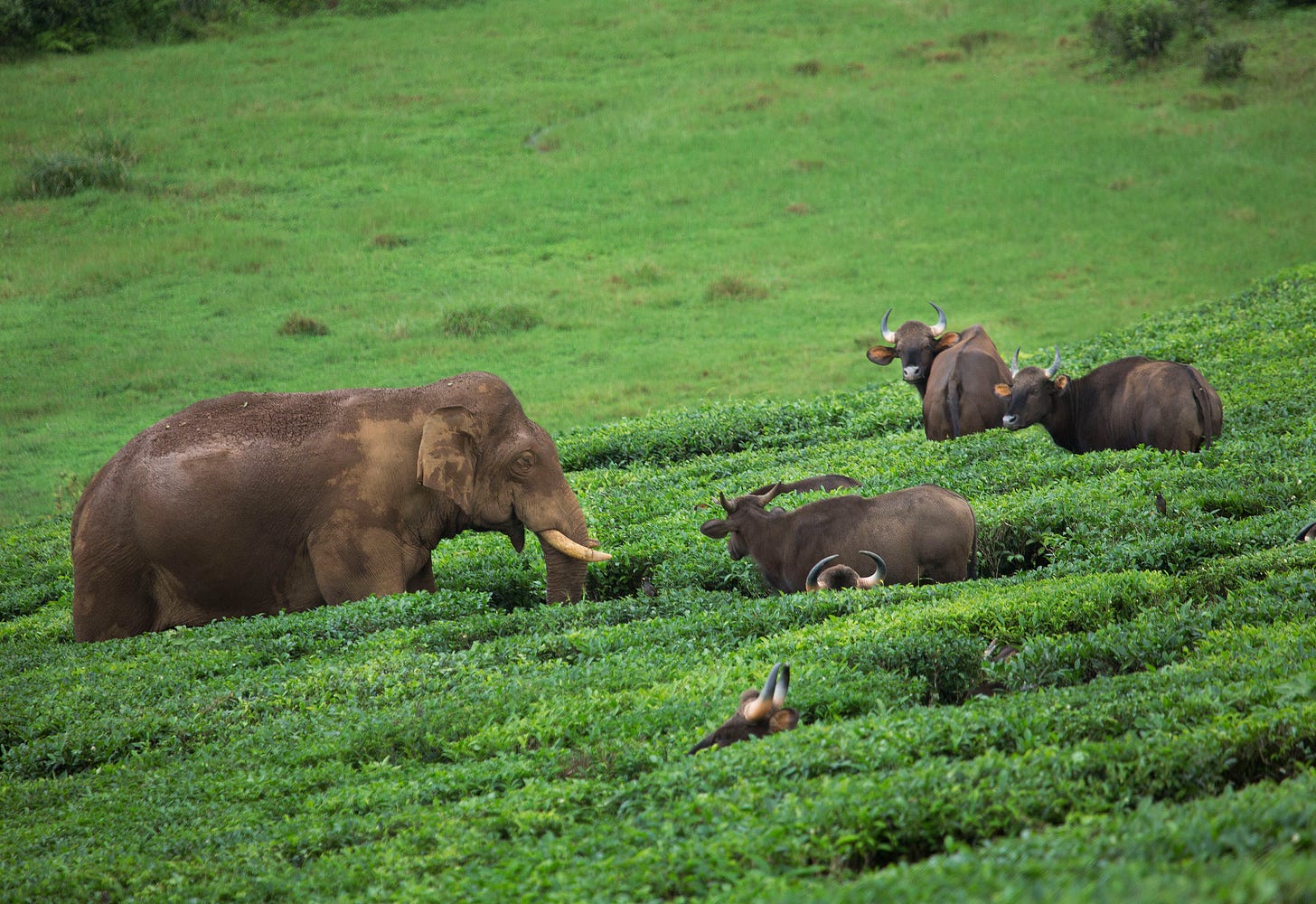The Western Ghats - An introduction to India's ecological marvel

You glide over the Arabian Sea, moving inland. You slowly see India’s west coast, where a myriad of cultures and people intersect. And you slowly start discovering swathes of green dappled everywhere, growing and growing in number until you see a land of towering peaks, falling valleys and grasslands as far as the eye can see.
You know, then, that you have reached the Western Ghats of India.
At a stretch of 1600 sq km, the Western Ghats are India’s most sacred haven for biodiversity. The Ghats are found across 8 Indian states, and account for nearly 30% of all of India’s wildlife. Come, take a stroll through these mountains of mysticism, where you hopefully get to experience the magic for yourself.
Your journey starts at the foothills. The vegetation is still not entirely evergreen, but you begin to notice that things change slowly. As you trundle uphill, the trees change from dry and small to moist and gigantic, towering over the land as gods of the forest. Indeed, they have been here for centuries, and found almost nowhere else; the Western Ghats is home to nearly 1300 species of endemic plants and trees.
The songs of the Ghats’ avian residents welcome you as you climb. There are over 500 species of them, big and small. Out of these, nearly 20 are found nowhere else on the entire planet. Majestic Hornbills swoop over the canopy, while the shrubs and groves are host to the Flycatchers. River terns skirt the various tributaries that course on and around the mountain ranges.
These mountains are home to bigger animals too, of course. India’s gentle giants, the Asian Elephants, roam the Western Ghats in Karnataka, where they are the highest in number throughout the country. Deer and smaller ungulates roam these forests too. On your journey, you may even find the footprint of a big cat, the only sign that these felines also live here.
But most important to the Western Ghats are the species you don’t see.The little ones of the wild are seldom observed closely. They go about their lives, seemingly undisturbed, not knowing the massive role they play in keeping the cogs of our great planet spinning. There are over 6000 species of insects in the western ghats, with many more yet to be discovered. Watch for the Southern Birdwing glide effortlessly across the sky, or the droves of nymphalids dancing from flower to flower in search of nectar.
But the Western Ghats are not just a biodiversity hotspot. They’re also a cultural one, with over 10-15 indigenous communities that call this region home. The Kurubas of the forests, experts in honey collecting. The Badagas and Malasars, who have lived with wildlife for millenia and are excellent at working with elephants. As you approach them, take note of their shy but friendly demeanor. They are wonderful people, with wonderful knowledge to impart into you.
Throughout this journey, there is one resident of the Ghats we have not spoken of yet. But their importance in this landscape is probably the most paramount of all. They deserve their own story, for another time.
Story by: Abhilash Pavuluri



